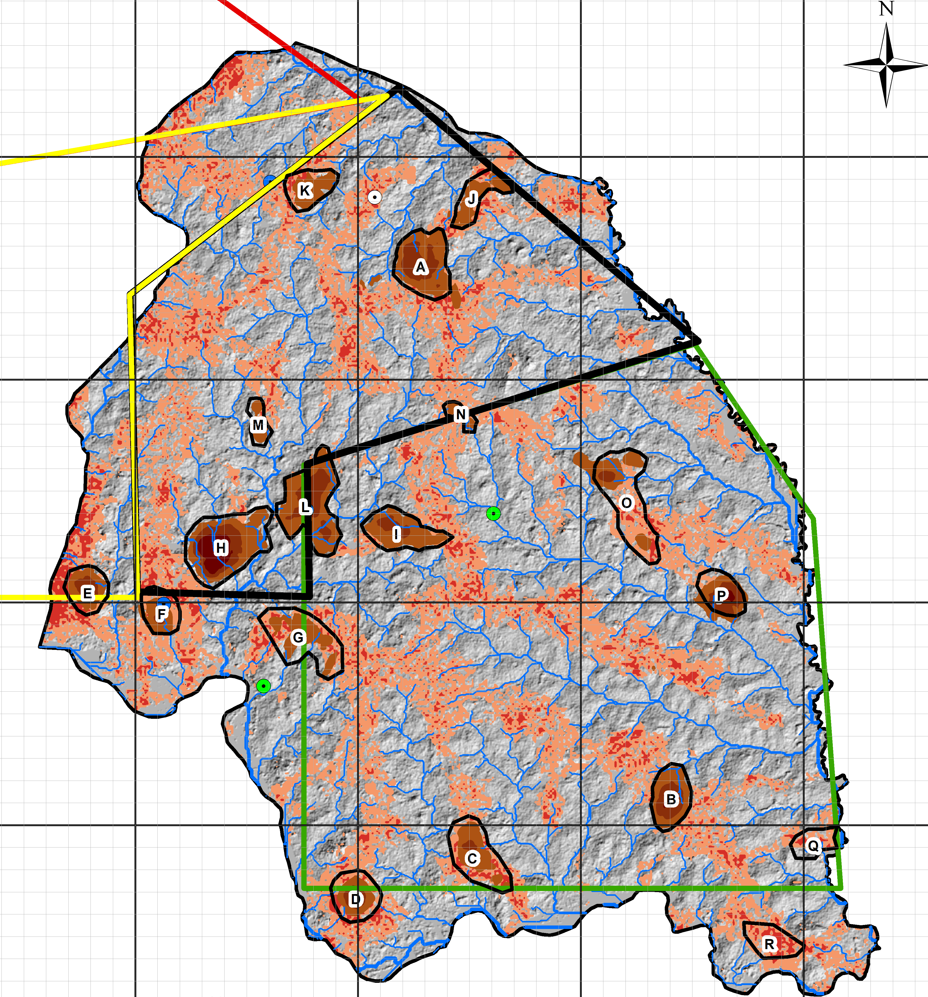Request for Guidance on Small-Scale Alluvial Gold Prospecting Methods

I am currently conducting a study focused on identifying potential alluvial gold targets, particularly placers, within an area ranging from 1,000 to 10,000 km². After analyzing existing data related to artisanal mining activities in the region, I found that the number of recorded sites is insufficient given the vastness of the area. To complement this approach, I made use of remote sensing, particularly the analysis of satellite imagery, which enabled me to highlight several potential placers and to define prospective zones. However, since I do not yet have the necessary equipment and I am not entirely certain of the most appropriate method to carry out small-scale gold prospecting, I would like, given your expertise, to seek your advice on the most suitable approaches. I sincerely thank you in advance for your availability and guidance. I would also like to point out that the identified prospects range in size from 0.9 to 10 km².
Comments
-
@ViorelHoroi @JoelVergunst do you know have any insights/thoughts on this?
0 -
1. Target Prioritisation (Desk)
- Rank by geomorphology (inside bends, confluences, terraces), provenance (upstream Au sources), and ASM proximity.
- Select top 3–5 prospects for ground truthing.
2. Reconnaissance (Fast Ground Check)
- Pan concentrates every 300–500 m along streams & confluences.
- Collect a few BLEG/heavy-mineral samples for lab confirmation.
- Hand-auger shallow bars/terraces to log stratigraphy.
- Upgrade targets showing consistent Au and classic traps.
3. Evaluation (Map Pay Horizons)
- Test pits or augers to bedrock on 200 m grid (~25 samples/km²).
- Tighten to 100 m or 50 m grids only if Au is continuous.
- Use ERT/GPR for buried channels where pits are impractical.
- Collect channel samples of pay layers.
4. Bulk Testing (Pilot)
- Excavate 0.1–2 t samples from pay zones.
- Process with simple gravity circuit (sluice/highbanker, blue bowl).
- Calculate g/m³ and cost/m³.
5. Decision
- Advance if recoverable grade exceeds cutoff (e.g., >0.15–0.3 g/m³) and shows continuity.
- Otherwise, down-rank and shift to next target.
6. Equipment (Minimal Start-Up Kit)
- Pans, sluice, classifier screens, hand auger, GPS, sample bags.
- Upgrade to highbanker/power auger, detector, or small ERT kit if justified.
2 -
I would like to sincerely thank you, Richard, for the proposal you shared and for the time you devoted to outlining such a clear and detailed methodology. Your step-by-step approach, from target prioritization through to evaluation and decision-making, is truly a valuable guide for me. I especially appreciate the balance you strike between simple, low-cost methods and more technical techniques, applied when appropriate.
I will make sure to integrate your recommendations into my work and adapt them to the specific context of my field. Thank you once again for the added value of your guidance and for the generosity with which you shared it.
With my deepest respect,
Igor Bayegui.
1




